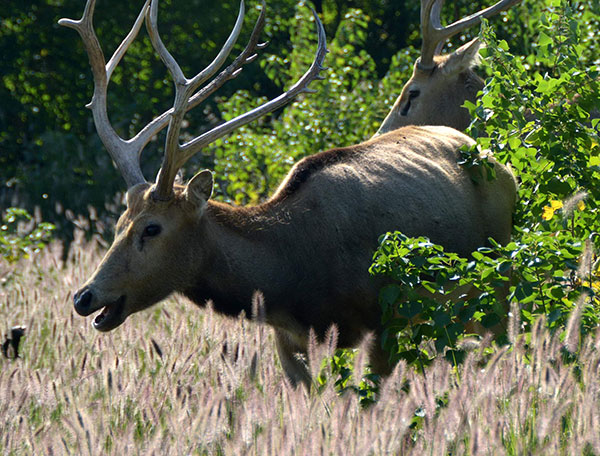Deer guardian finds satisfaction
 |
|
The population of milu deer has seen a revival at the Dafeng Milu National Nature Reserve in Jiangsu province.[Photo by Zhou Gukai/For China Daily] |
When Ding Yuhua, 62, was first introduced to milu deer, the acquaintance was not a happy one.
But things have changed. Three decades on, he regards them as family, and his work has won him nationwide acclaim. He is known as the Guardian of Milu Deer.
Milu, also known as Pere David's deer, is a species native to China. Over hunting and loss of habitat led to its near extinction in the early 20th century.
In 1986, the British government gave 39 of the deer to Dafeng Milu National Nature Reserve in Jiangsu province, starting a revival of the population, which has existed largely in captivity.
The gift also started Ding's 28-year career as a milu keeper. With his care and years of research, the population has grown to 3,223.
Ding recalls being less than happy when he was assigned to the job three decades ago. A skilled veterinarian accustomed to tending cattle and sheep, he found the milu to be strange.
He knew it by its informal Chinese name, sibuxiang, which translates as "the four dislikes", referring to the animal's incongruous features: the neck of a camel, the hoofs of a cow, the tail of a donkey and the antlers of a deer.
The milu, which are naturally semi-acquatic, were not accustomed to the water and land in China. Many suffered severe diarrhea and dyspepsia. With no references or instruction, Ding and his colleagues could only rely on their past veterinary experience to treat them. During the first three months, he watched the animals around the clock, sleeping just two or three hours a day.
It was dangerous work, too. He suffered snakebites and heat stroke, and was once almost killed by a frenzied milu deer. His colleagues were scared away from the job, and some advised him to quit, but Ding refused.
"I have spent so much time with the milu, I think they are part of my life," Ding said.
One day, he discovered that a large, antlered buck had escaped over the wire fence. Ding was worried and began searching the vast swampland that covered more than 1,300 square kilometers.
The search lasted from summer to autumn. During the day, Ding walked for miles, crossing rivers and marshes, suffering insect bites and injuries from tree branches. At night, he climbed the trees with a flashlight, hoping to spot the shining eyes of the deer. He once woke from a nap to find himself hanging from a tree.
Finally, by following hoof-prints and droppings, Ding found the runaway by a river.














